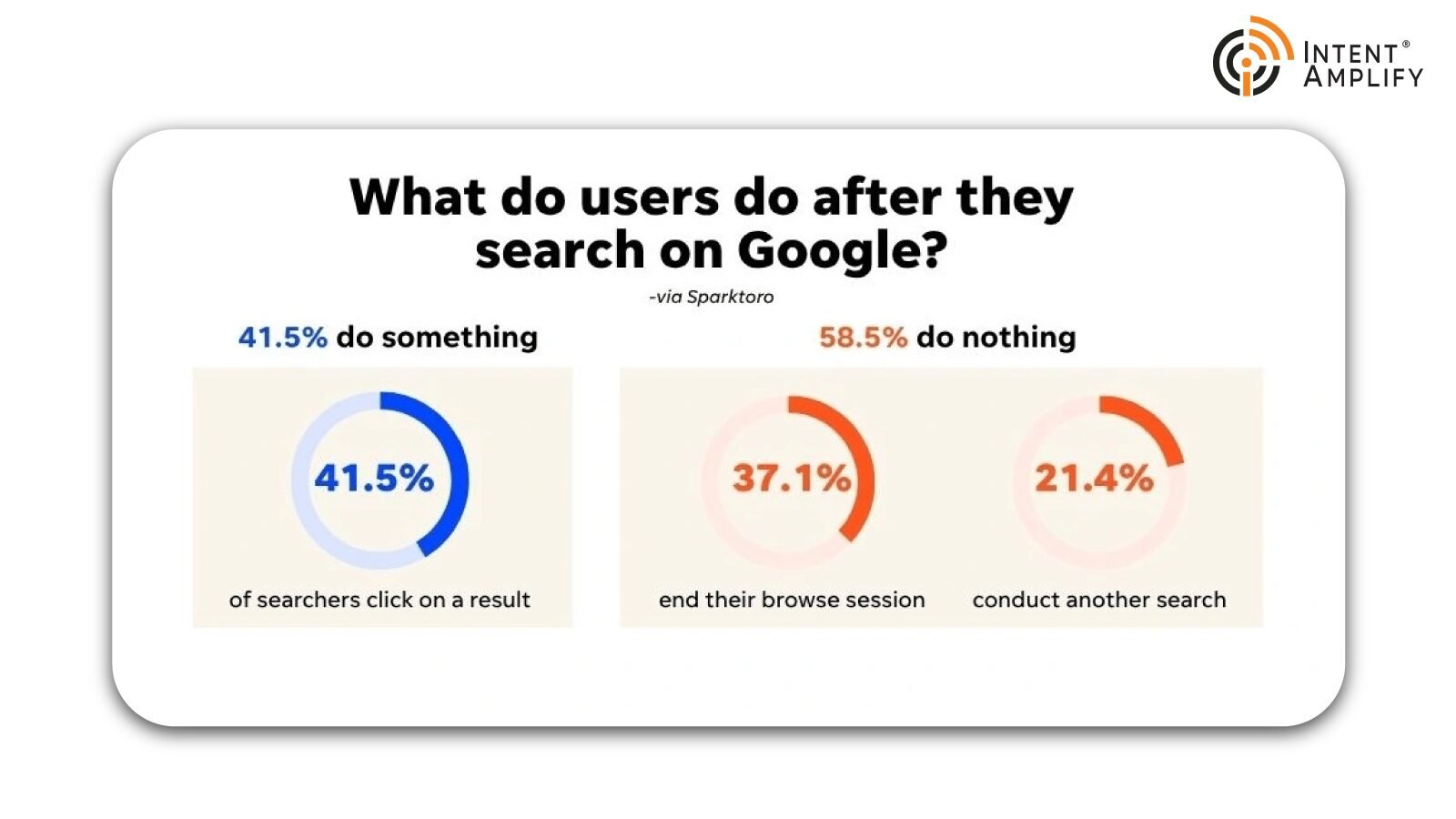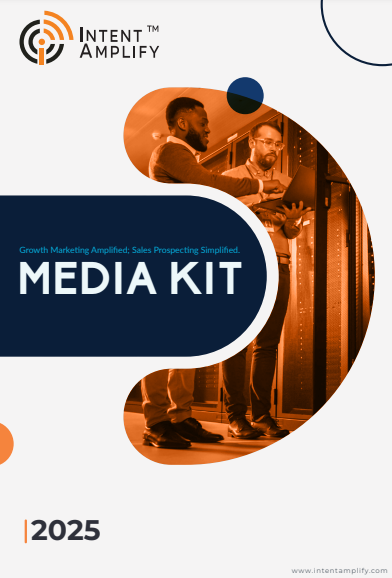
What Is Google Search Generative Experience (SGE) and Its Benefits for B2B
- Last updated on: September 2, 2025
Search is changing currently at a dramatic pace. Google Search Generative Experience (SGE) Now also known as Google’s AI Overviews, is revolutionizing how users locate, evaluate, and take action on information. People are taking a different journey from seeing keyword-based search results to now receiving AI-based, conversational information. It took both that definition and the SGE term from Google. For B2B marketers, these changes represent a major consolidated set of strategic and operational shifts within the evolving market structure, but it is a chance at a serious strategic shift. Knowing how SGE works and how to leverage its advantages while mitigating its dangers will be important to remaining visible, competitive, and relevant in a search world dominated by AI.
What Is Google Search Generative Experience (SGE)?
Google Search Generative Experience (SGE) is an AI-enhanced version of the regular search experience that seeks to give users richer, contextualized answers on the search results page itself. Instead of returning a page of blue links, SGE goes beyond by using advanced generative AI models to produce AI-generated summaries, insights, and follow-up suggestions that are tailored specifically for the search query.
SGE was first launched in May 2023 as part of an experimental Search Labs within Google and has been rolled out globally on a gradual basis. It was rebranded, apparently as AI Overviews, in 2024. SGE search leverages advanced large language models (LLMs) such as MUM (Multitask Unified Model), PaLM 2, and Google’s latest Gemini models. These technologies enable Google to interpret complex queries and deliver multimodal responses. Eventually, combining text, images, and potentially video, summarized from multiple credible sources.
In operational terms, this is how SGE works:
When a user enters a query, Google interprets user intent and context, retrieves relevant web pages, and uses generative AI to generate a summary, which then displays at the top of the search results. The SGE prompt typically generates a summary that coincidentally would also include highlights, source supports, appropriate images, and generated appropriately-sized follow-up prompts, which allow the user to narrow their context without starting their search process over again.
For instance, if a user conducts a search for “best marketing automation platforms for b2b saas,” depending upon the popularity and bona fides of the sources SGE may display a condensed comparison of the best tools, take note of distinctive features and suggest next step prompts for users like “see prices”, or “compare HubSpot vs Marketo” -with citations from selected high-quality authoritative sources. This is moving far beyond previous Google SERPs: rather than presenting ranked organic listings.
Google’s own SGE testing data shows that AI-generated overviews reduce clicks to traditional blue links by as much as 18–36% (according to Mid-July 2025 search industry updates). Google Search Generative Experience is combining conversational search with instructed curated sourcing with the intention of helping as many users as possible to make quicker decisions. For companies, particularly those in B2B, it means that their search visibility will now rely less on keyword rankings and more on how significantly their content marketing can be implicated for summarisation purposes by Google’s AI.
Risks and Limitations
While exciting new opportunities exist with Google’s SGE, there are also significant risks that B2B marketers need to consider seriously.
1. Accuracy and “AI Hallucinations”
Like with other generative AI tools, SGE will sometimes provide inaccurate or misleading information, and this is called “hallucination”. In initial user testing of SGE, there were examples of impractical advice (“integrate disparate elements into a cohesive framework”) and misrepresented data. While Google has instituted stronger fact-checking measures and even provides disclaimers for AI Overviews, there will always be some margin for error. For B2B brands operating in highly regulated industries, like finance, healthcare, or cybersecurity, there is a legitimate risk of misinforming prospects and damaging credibility and trust.
2. Reduced Traffic to Websites
Reduced click-through rates (CTR) are a major concern that many in the industry are discussing. Because SGE directly provides comprehensive summaries on the results page, users may feel that they do not need to visit the source websites. Google states that overall traffic remains stable and that the traffic they receive tends to be more engaged, but marketers need to prepare for a possible change in patterns in website traffic and conversion funnels.
3. Content Ownership and Legal Issues
Publishers have expressed concern about how SGE uses and attributes content, and some even raised concerns that SGE’s summarization of webpages could sever brand recognition. In some instances, companies have filed lawsuits on the grounds that any AI-generated summaries that included their proprietary material were not appropriately attributed.
4. Reliance on AI Interpretation
SGE determines which sources will be part of its summaries based on factors such as authority, relevance, and document structure. Even good-quality content can be excluded due to a lack of structured data, headings, or acknowledged authority indicators. This relies on Google’s ever-evolving algorithm, where the authority of individual pages may change simply due to changes made at Google’s discretion.
In short, while SGE does present an overall broader potential for visibility, it reduces the control you have over your content by even prompting many of the Google AI systems and adds a prevalent factor of risk; this makes optimization critical for B2B companies.
Strategic Benefits for B2B Organizations
While SGE poses certain risks, it also has a capacity to allow B2B marketing tactics that are unimaginable right now. For organizations that are willing to be one of the first adopters and pioneer this technology, the technology can grow brand awareness, Quality Lead Generation, and content impact in ways that were not possible with traditional SEO (Search Engine Optimization) alone.
1. Greater Visibility and Thought Leadership
SGE features information from highly authoritative sources in its AI Overviews. If your brand is authoring valuable, trustworthy content, there is an opportunity that your brand’s insights will appear in these AI Overviews. It showcases your company as a thought leader in the space.
For example, a B2B SaaS provider that writes authoritative guides on “enterprise marketing automation trends” may be referenced in an SGE snapshot, giving their brand instant visibility to decision makers without the need to depend only on organic ranking spots. This type of visibility can help to drive brand awareness, especially in competitive arenas.
2. Targeting Precision and Higher Quality leads
SGE works well with conversational, context-based queries, such as “best Enterprise resource planning (ERP) software for manufacturing companies with less than $50M in revenue.” These searches exhibit a clear intent, generally from a buyer in the consideration or decision stage.
This type of strategy can allow B2B companies to target more specific long-tail keywords that attract significantly fewer visitors, but significantly more qualified visitors. Early reports suggest that while SGE may reduce overall click volume, the users who do click through are often more engaged, stay longer on-site, and are more likely to convert.
3. Content Efficiency and Multi-Modal Integration
SGE’s multi-modal output (text, image, ratings, and instant comparisons) allows for new means of enriching content. That said, product images, infographics, and video explanations embedded in your content may improve the likelihood that Google’s AI pulls your assets into AI Overviews.
Example: a cybersecurity vendor publishing a visual threat map to share alongside a whitepaper. If Google’s AI makes a contextual judgment that the visual is salient, it could appear in the search snapshot itself, contributing greater brand effect before the click.
4. Evolution of SEO Strategy
SGE will change the rules of the SEO game. While keyword rankings will still be an important metric, they will take a back seat to how well the content provides direct answers to user intent. This means the B2B company must focus on creating clear, structured, and contextual content that the AI can understand.
Example: a fintech company that wants to target “how do I comply with PSD3 regulation” would want to create content that includes direct summaries, outlines, and headings, plus schema markup. By doing this, the company has made its content more readable, but also increased the chances that the AI pulls significant data for its Overview. Clear E-E-A-T (Experience, Expertise, Authoritativeness, Trustworthiness) indicators like author credentials, sourcing, and useful content will also help improve the decision.
When approached strategically, SGE is an accelerator for B2B Visibility. The key lies in aligning content quality, structure, and authority signals with Google’s AI expectations.
Actionable Recommendations for B2B Marketers
Embracing Google’s SGE means there needs to be a shift in your SEO strategy and your content creation. B2B marketers who take action soon will have the advantage of getting ahead of their competition. Here’s how you can set yourself up for success going forward.
1. Audit Content for Conversational Relevance
You’ll want to look for the main themes and high-value pages that could derive from SGE’s conversational, long-tail queries. Look for the places of content where you lean hard into sections that collectively do not fully answer intent-driven searches.
2. Optimize for AI Overview Inclusions
Have schema markup, structured headings, and clear summaries to make your content easily readable by a machine. Within longer pieces, you can include direct, word-count-concise answers to facilitate Google’s AI extracting with little effort.
3. Optimize Authority Signals
Demonstrate expertise in authorship; when referring to sources, always refer to credible and trustworthy sources; when presenting facts, present without embellishment. B2B brands will be able to improve E-E-A-T performance with original research and case studies.
4. Add Visual/Multimodal Content
Embed relevant images, infographics, videos, etc. that enhance the written element of your content. SGE (Search Generative Experience) is increasingly prioritizing visual elements to present enhanced visual searching.
5. Measure, Learn, Pivot
See how impressions, clicks, etc., and on-page engagement change as your content includes new elements. Measure how “SGE” optimized content or content in an SGE format is doing compared to traditional SEO targets. Use this to improve what you create next.
Incorporating these steps ensures that your brand is not only prepared for the AI-driven search era but also positioned to thrive in it.
Conclusion
One of the most impactful shifts for B2B audiences and how they source, find, and evaluate information is Google Search Generative Experience. Gartner’s 2025 digital marketing trends report notes that “AI-powered search experiences will reshape up to 40% of B2B buyer journey touchpoints by 2026. While shifting the premise of SEO, it has created opportunities for visibility/authority and lead quality. Ultimately, success will be a function of not only the technical aspects of optimization but also the high-value and authority of the content. The current market environment presents significant opportunities for B2B marketers to leverage emerging trends for competitive advantage. The pathway is clear – adapt to the new ways as early as you can, focus on quality content, and align your strategy to the future of AI-driven search.
FAQs
1. How can B2B companies get included in Google’s SGE results?
By creating authoritative, well-structured content that speaks to specific and intent-driven queries and taking advantage of schemas, strong E-E-A-T signals, and visuals.
2. Will SGE completely replace “traditional” SEO?
No. Traditional SEO will still matter in regard to rankings and organic traffic, but you will need to adjust your strategies so that they address conversational search and AI-powered user summaries alongside regular SERPs.
3. Does SGE help niche B2B industries as much as it does more established markets?
Yes, however, the content speaks authoritatively to specialized queries. In fact, niche industries may be more beneficial as SGE typically favors quality content that is rich in detail and acknowledges expertise.
4. How can you measure the return on investment of being included in SGE summaries?
Track broad visibility in the AI Overview feature, review engagement metrics from resulting clicks and conversions. Line this performance against non-SGE-optimized content to gauge impact.
5. What is the best way to be ready for SGE moving forward?
Stay updated on Google’s changes in AI, continually update your cornerstone content, experiment with conversational query optimization, and make sure structured data is built in to enable smooth AI parsing.




